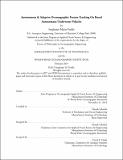| dc.contributor.advisor | Henrik Schmidt. | en_US |
| dc.contributor.author | Petillo, Stephanie Marie | en_US |
| dc.contributor.other | Woods Hole Oceanographic Institution. | en_US |
| dc.date.accessioned | 2015-07-17T19:13:34Z | |
| dc.date.available | 2015-07-17T19:13:34Z | |
| dc.date.copyright | 2015 | en_US |
| dc.date.issued | 2015 | en_US |
| dc.identifier.uri | http://hdl.handle.net/1721.1/97772 | |
| dc.description | Thesis: Ph. D., Joint Program in Oceanography/Applied Ocean Science and Engineering (Massachusetts Institute of Technology, Department of Mechanical Engineering; and the Woods Hole Oceanographic Institution), 2015. | en_US |
| dc.description | This electronic version was submitted by the student author. The certified thesis is available in the Institute Archives and Special Collections. | en_US |
| dc.description | Cataloged from student-submitted PDF version of thesis. Vita. | en_US |
| dc.description | Includes bibliographical references (pages 203-213). | en_US |
| dc.description.abstract | The capabilities of autonomous underwater vehicles (AUVs) and their ability to perform tasks both autonomously and adaptively are rapidly improving, and the desire to quickly and efficiently sample the ocean environment as Earth's climate changes and natural disasters occur has increased significantly in the last decade. As such, this thesis proposes to develop a method for single and multiple AUVs to collaborate autonomously underwater while autonomously adapting their motion to changes in their local environments, allowing them to sample and track various features of interest with greater efficiency and synopticity than previously possible with preplanned AUV or ship-based surveys. This concept is demonstrated to work in field testing on multiple occasions: with a single AUV autonomously and adaptively tracking the depth range of a thermocline or acousticline, and with two AUVs coordinating their motion to collect a data set in which internal waves could be detected. This research is then taken to the next level by exploring the problem of adaptively and autonomously tracking spatiotemporally dynamic underwater fronts and plumes using individual and autonomously collaborating AUVs. | en_US |
| dc.description.statementofresponsibility | by Stephanie Marie Petillo. | en_US |
| dc.format.extent | 213 pages | en_US |
| dc.language.iso | eng | en_US |
| dc.publisher | Massachusetts Institute of Technology | en_US |
| dc.rights | M.I.T. theses are protected by copyright. They may be viewed from this source for any purpose, but reproduction or distribution in any format is prohibited without written permission. See provided URL for inquiries about permission. | en_US |
| dc.rights.uri | http://dspace.mit.edu/handle/1721.1/7582 | en_US |
| dc.subject | Joint Program in Oceanography/Applied Ocean Science and Engineering. | en_US |
| dc.subject | Mechanical Engineering. | en_US |
| dc.subject | Woods Hole Oceanographic Institution. | en_US |
| dc.subject.lcsh | Remote submersibles | en_US |
| dc.subject.lcsh | Autonomous vehicles | en_US |
| dc.subject.lcsh | Ocean engineering | en_US |
| dc.title | Autonomous & adaptive oceanographic feature tracking on board autonomous underwater vehicles | en_US |
| dc.title.alternative | Autonomous and adaptive oceanographic feature tracking on board autonomous underwater vehicles | en_US |
| dc.type | Thesis | en_US |
| dc.description.degree | Ph. D. | en_US |
| dc.contributor.department | Joint Program in Oceanography/Applied Ocean Science and Engineering | en_US |
| dc.contributor.department | Woods Hole Oceanographic Institution | en_US |
| dc.contributor.department | Massachusetts Institute of Technology. Department of Mechanical Engineering | |
| dc.identifier.oclc | 913418570 | en_US |
